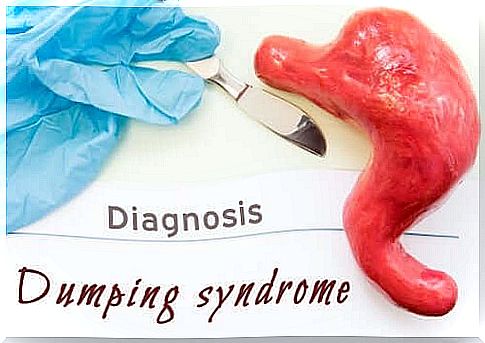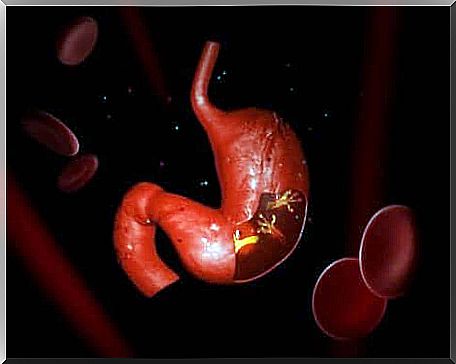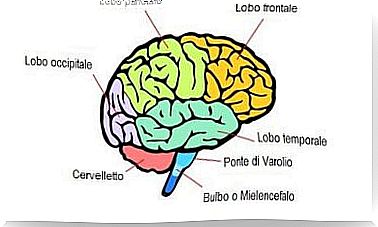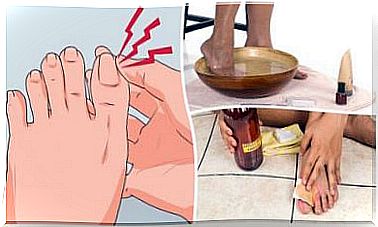Dumping Syndrome, What Is It?

Dumping syndrome is one of the possible side effects of gastric surgery and is also known as rapid emptying syndrome. Almost all patients have one or more symptoms of this type in the postoperative phase.
There are, in fact, reports on dumping syndrome from the earliest gastric surgery operations in history. In 1881 Theodor Billroth described it in detail for the first time. For his part, Hertz referred to the “rapid voiding” of a patient who underwent partial gastrectomy in 1913.
However, it was only in 1922 that it was possible to observe the rapid emptying procedure in patients for the first time through special radiological analyzes. She was given the name of dumping syndrome for the meaning of the English word which means to throw, dump.
What is dumping syndrome?

Dumping syndrome is a complication resulting from digestive surgery. Stomach contents pass too quickly to the small intestine before the food is fully digested by the stomach.
This condition is also referred to as “rapid emptying” and can trigger a variety of gastrointestinal and other difficulties. The patient may present with nausea, colic, cramps or diarrhea, among other symptoms. Hypoglycemia, weakness, dizziness and / or sweating may also be experienced.
The possibility and severity of the dumping syndrome largely depends on the type of gastric surgery performed. It can last up to a year. In most cases, the symptoms disappear spontaneously and gradually.
Digestion
The stomach works as a food store. Acids and enzymes are produced in it which allow the initial decomposition of foods to produce a substance called chyme. In other words, the stomach transforms food to make it more easily assimilated by other organs.
The path of food continues in the small intestine, whose main function is to absorb the digested food. Between the stomach and the intestine there is a kind of valve that regulates the passage of chyme from the stomach to the upper part of the small intestine. This valve is called the pyloric sphincter.
Under normal conditions, the chyme slowly passes from one organ to another. Following gastric surgery, however, the pyloric sphincter can be compromised so that the sphincter passes too quickly to the duodenum, the upper part of the small intestine. Dumping syndrome can also occur without affecting this valve.
Types of dumping syndrome

There are two types of dumping syndrome, both of which are characterized by the too rapid expulsion of large volumes of contents from the stomach to the small intestine. The difference depends on the initial stage, the characteristics of the mechanism and its effects:
- Early. In this mode, the emptying of the stomach takes place between 30 and 45 minutes after the ingestion of food. It is the most frequent type and causes:
-
- Feeling of heaviness.
- Nausea.
- He retched.
- Diarrhea.
- Colic.
- Hypotension.
- Tachycardia.
- Sweat.
- Weakness.
- Late. It occurs after 2-4 hours after eating. The rapid passage of sugary foods into the small intestine in turn causes a disproportionate release of insulin, leading to hypoglycemia.
Further information
To prevent the risk of dumping syndrome occurring, it is advisable to divide the food intake into five or six meals a day, without drinking any liquid during ingestion. The drinks must be consumed about half an hour / hour after the meal.
It is also recommended to limit the use of carbohydrates or foods rich in sugar, always ingesting them accompanied by vegetables, meat or fish. It is also convenient to eat slowly and not to overdo it with dairy products and derivatives. Normally these measures are sufficient to reduce and treat the syndrome.
If the condition develops, you need to follow your doctor’s instructions, who will most likely give you medicines to reduce symptoms. If none of these measures work, further surgery may be needed to correct the problem.









